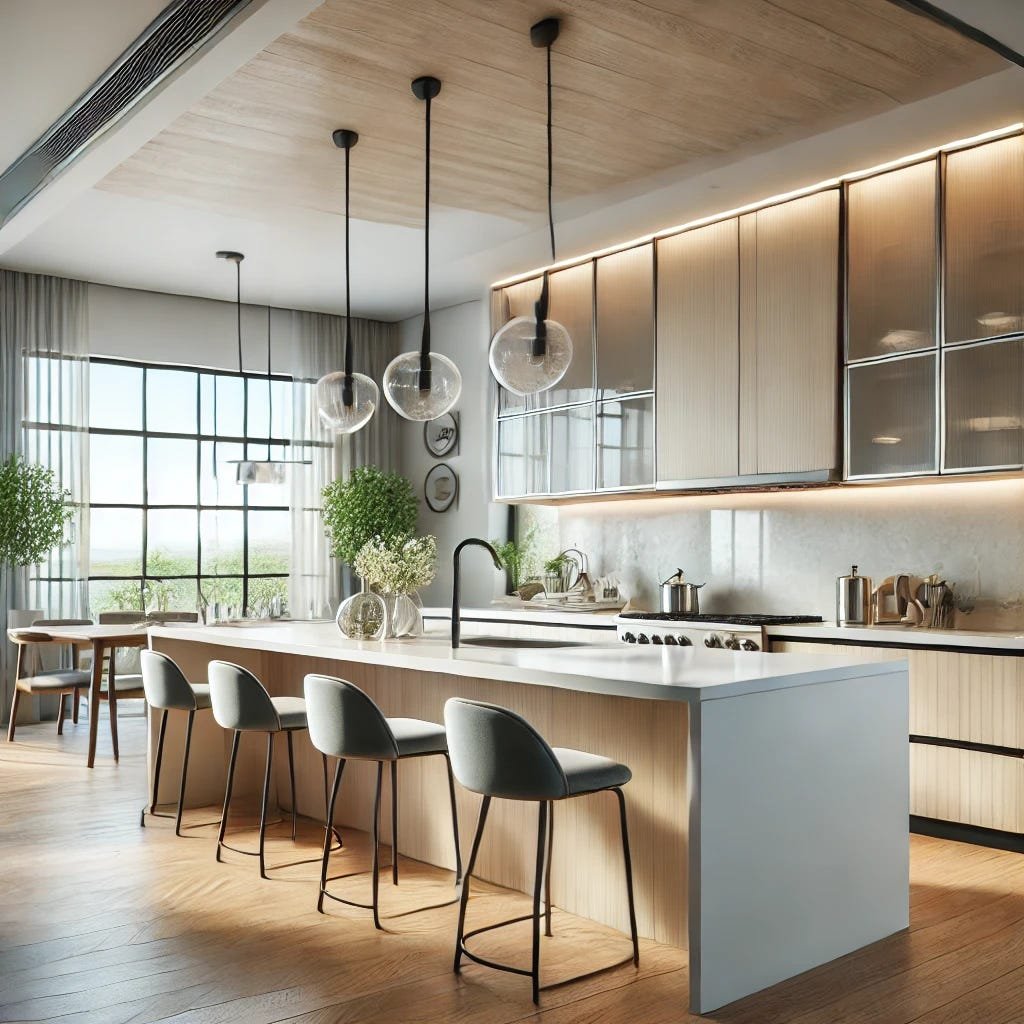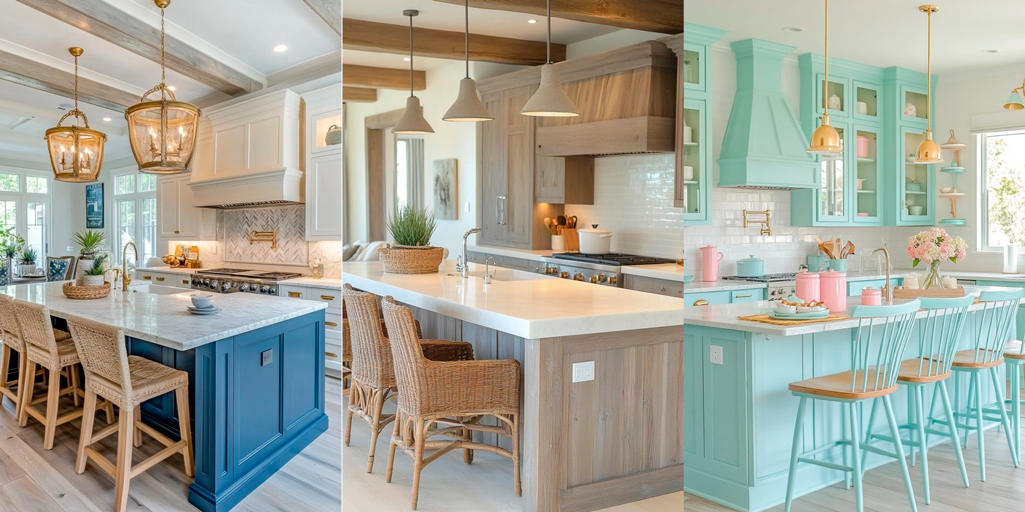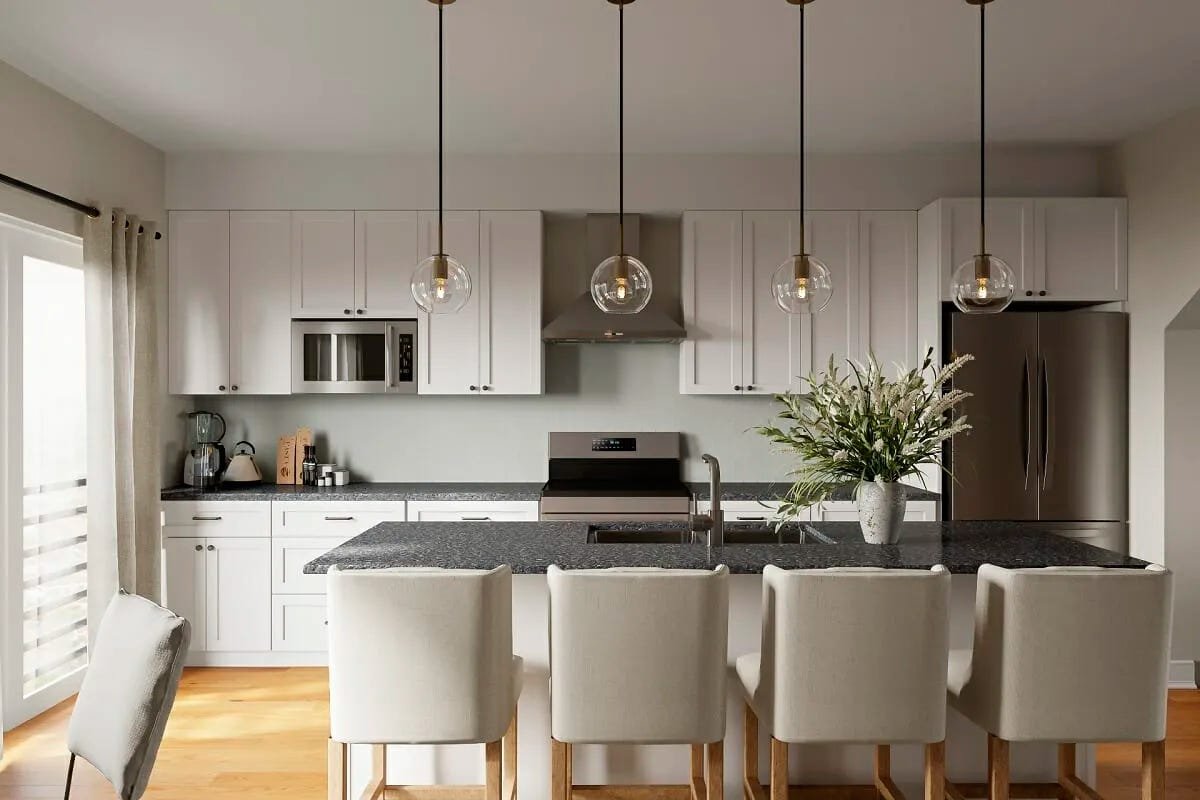Trending Kitchen Styles in Florida
Coastal, Tropical, and Modern Influences

Florida’s kitchen design trends reflect the state’s vibrant lifestyle and are often grouped into three primary categories: Mediterranean, Contemporary, and Transitional. Each of these styles emphasizes open spaces, functionality, and aesthetics. Here’s a breakdown of how these trends manifest in Florida kitchens, along with a discussion on islands, lighting, and cabinet choices.
1. Coastal and Tropical Kitchens (Mediterranean Style)
Mediterranean kitchens in Florida combine coastal and tropical elements, embracing natural materials and bright, airy layouts. This style reflects the state's proximity to the ocean and its year-round warm climate.
- Key Features: Light colors (whites, blues, and greens) paired with natural materials like wood and stone. The overall goal is to create a relaxed, beach-inspired atmosphere that connects with nature.
- Islands & Lighting: Islands in Mediterranean kitchens often serve as central gathering spots, perfect for cooking, dining, and socializing. Pendant lights over the island add elegance, while recessed lighting ensures the kitchen is well-lit without disrupting the design.

2. Modern Minimalism (Contemporary Style)
In Florida's urban areas, contemporary kitchens are sleek and minimalist, focusing on clean lines, smart technology, and open layouts. This style is perfect for modern homes that prioritize efficiency and functionality.
- Key Features: Neutral tones (gray, black, white), flat-panel cabinetry, and high-end materials like quartz countertops. Contemporary kitchens also tend to include smart appliances and hidden storage solutions for a clutter-free environment.
- Islands & Lighting: Contemporary kitchens often feature large islands that double as dining spaces or workstations. Recessed lighting provides a clean look, while pendant lights offer a sophisticated touch above the island.

3. Transitional Kitchens
- Key Features: Neutral color palettes, shaker-style cabinets, and a mix of modern and classic materials. Shaker door cabinets are especially popular for their timeless appeal, offering clean lines that complement both traditional and modern elements.
- Islands & Lighting: Islands in transitional kitchens are often used for dining, prepping, and extra storage. Pendant lighting adds a decorative touch, while recessed lights help evenly illuminate the space.

The Influence of Open-Concept Design
" All three styles—Mediterranean, Contemporary, and Transitional—are heavily influenced by the growing trend of open-concept layouts. The kitchen has become a central gathering space for families and social events, often blending seamlessly with the living and dining areas. This trend creates visual openness, enhances functionality, and fosters a sense of togetherness by removing barriers between the kitchen and adjacent spaces. Homeowners prioritize large islands for socializing, cooking, and working, making them focal points in the open kitchen space. The shift to open kitchens is driven by the need for multi-purpose spaces that accommodate daily life and social gatherings"
homesandgardens.com
| Cheryl Pett Design.
Cabinet Choices: RTA vs. Customized Cabinets
Once you’ve selected your kitchen style, it’s time to choose the right cabinets. Your decision between RTA (Ready to Assemble) cabinets or customized cabinets will significantly impact your kitchen’s design and functionality.
RTA (Ready to Assemble Cabinets)
-
- Pros: RTA cabinets have become more durable in recent years, offering good material quality. With proper installation by a skilled contractor, they can provide a lasting finish. They are budget-friendly and come in various styles and finishes.
- Cons: RTA cabinets are limited to standard sizes, which may not fit non-standard spaces in your kitchen. Assembly can also affect durability, as the final outcome depends heavily on the expertise of the installer.
Customized Cabinets
-
- Pros: Customized cabinets offer maximum flexibility, allowing you to choose colors, finishes, and materials to match your design vision. You can even opt for natural wood stains to enhance the texture and warmth of the space. Custom cabinets fit perfectly in any layout and offer superior durability.
- Cons: They are more expensive and have longer lead times due to their made-to-order nature. However, the personalized design and quality often justify the higher cost.
Conclusion
Florida’s kitchen styles—whether coastal, modern minimalist, or transitional—are all about creating functional and aesthetically pleasing spaces. Open-concept layouts, islands, and smart lighting solutions make these kitchens ideal for social gatherings and daily life. When choosing between RTA and custom cabinets, consider your budget, style preferences, and the long-term durability of the materials.
Written by Levys Laffont